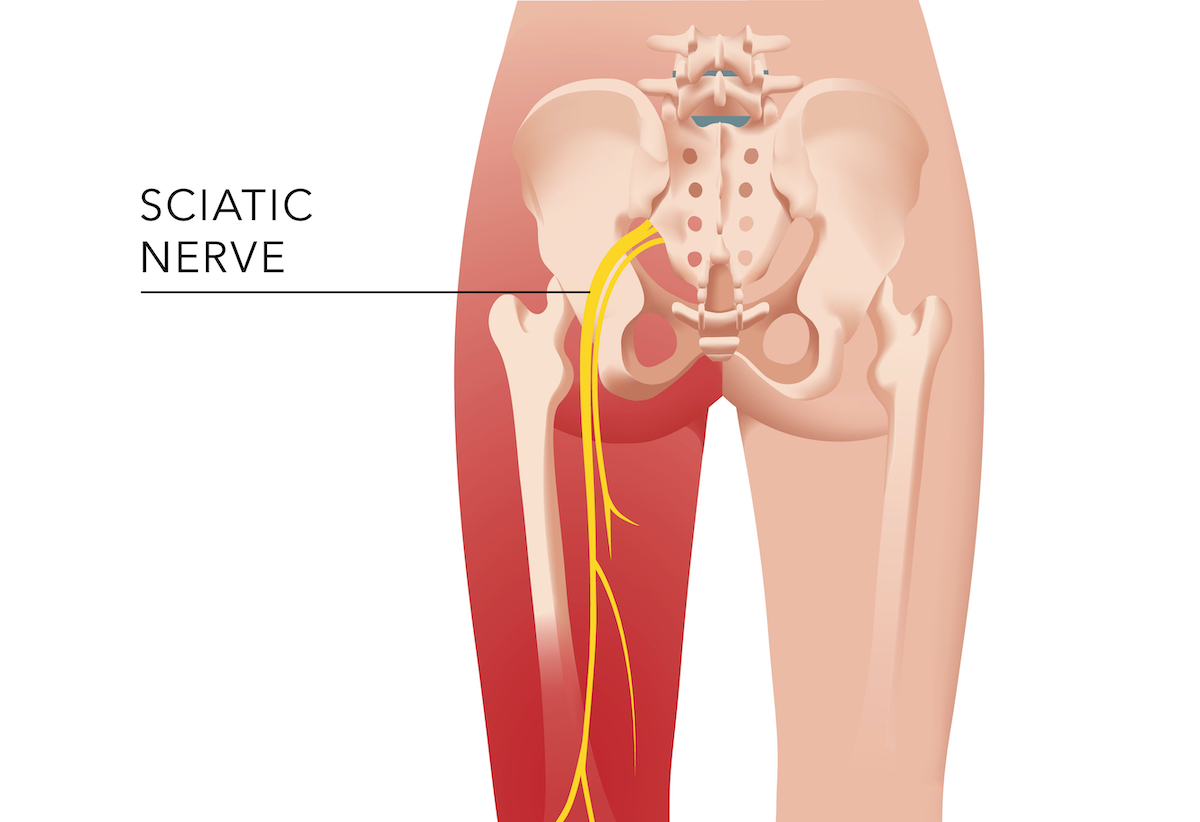Sciatica is a term that the medical world uses to describe the pain running through the longest nerve in the body. You probably already guessed it, that’s the sciatic nerve. It runs from the base of your spine – buttock -, along the back of both legs, and ends just below the knee to branch in other nerves that run through the calve and foot. Sciatica affects about 10% – 40% of Americans older than 40 and is a medical condition that is actually common. Still, many people don’t know what the condition is, what the symptoms are, and once they have it if it’s treatable.

What Causes Sciatica?
Generally, sciatica is caused by an injury or irritation to the sciatic nerve. This is a rare condition, but nowadays, they use the term for all kinds of pain that originates from the lower spine and radiates to – one of – the legs. The question is; what causes this nerve pain? Well, there are several medical conditions that can cause nerve pain in the sciatic nerve. The most common cause is a slipped or herniated disk, which puts pressure on the nerve root. Other reasons are:
- Trauma injury in the spine or sciatic nerve
- Tumor(s) in the spine that presses on the nerve
- Degenerative disk disease
- Spinal stenosis
- Spondylolisthesis
- Osteoarthritis
- Piriformis syndrome
- Cauda equina syndrome
Sciatica & Pregnancy
In all of the above causes, something- a disk, tumor, or something else – in the sciatic nerve or (lumbar) spine exerts pressure on the nerve. As a result, you experience pain in one of your legs. Another very common cause of sciatica in women under 40 is being pregnant. Hormones that cause a weaker back, which can cause disc slip, also play a big role. When the baby’s weight and position are lying on the sciatic nerve, this will also add pressure to the nerve, which causes pain. There are a few risk factors you can take into account. For example, not exercising or hardly exercising, smoking, poor posture, obesity or a previous injury to the lumbar spine are all factors that may increase the risk of sciatica. Having diabetes or osteoarthritis may also increase the risk of sciatica. Therefore, make sure you are well aware of the warning signs of this condition. You’ll read about them on the next page, so go on quickly.

